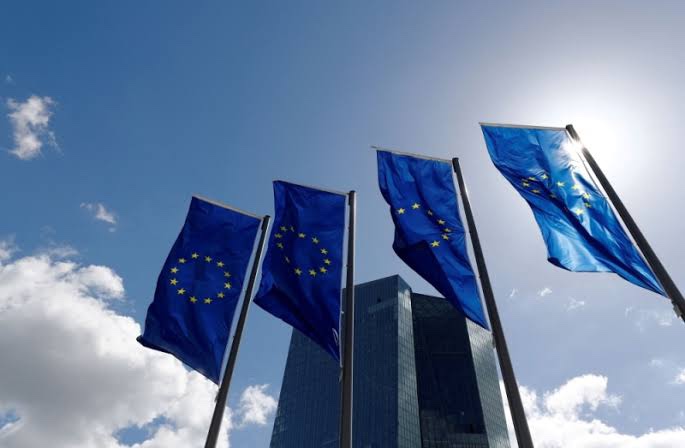Stagnant German growth clouds eurozone economy

While France and Spain grew in the second quarter, the German economy flatlined, adding to worries the traditional manufacturing powerhouse could become a drag on the eurozone economy.
Germany’s gross domestic product (GDP) stagnated between April and June, while inflation remained high, according to data published by the federal statistics agency Destatis Friday.
The growth figure was worse than expected by many observers, and left Germany facing the threat that its economy could contract over the whole of 2023.
Europe’s largest economy already slipped into recession around the turn of the year as it shrunk in two consecutive quarters.
Zero growth meant Germany had technically stopped the slump — but Friday’s figures could still be revised down when final data is published later.
The limp performance will do little to quell doubts about the state of the German economy, which was hit hard by the Russian invasion of Ukraine and the ensuing sharp rise in energy prices.
The latest data likewise left Germany lagging eurozone peers.
The French economy — the eurozone’s second biggest — posted a surprise 0.5 percent rise in GDP, while Spanish growth came in at 0.4 percent, slower than in the previous quarter, but still better than expected.
Austria, meanwhile, fared even worse than Germany, shrinking 0.4 percent in the second quarter.
The European Union’s statistics agency is due to publish growth data for the whole 20-member eurozone on Monday.
- ‘Twilight zone’ –
After shrinking by 0.4 percent in the last quarter of 2022 and 0.1 percent over the first three months of 2023, the German economy looked to be struggling.
Germany “seems to be stuck in the twilight zone between stagnation and recession”, said Carsten Brzeski of ING bank.
Greater private consumption had lifted the economy somewhat in the second quarter but recently released indicators “do not bode well for economic activity in the coming months”, Brzeski said.
German inflation similarly remained high, adding to the pressure on households and businesses.
The pace of consumer price increases slowed slightly in July to 6.2 percent — but the rate remained more than three times the two-percent target set by the European Central Bank.
The eurozone collectively fell into recession around the turn of the year, along with Germany.
But while the currency bloc was on average expected to bounce back, the German economy looked set to stay in the doldrums.
The International Monetary Fund’s (IMF) latest estimates saw the euro area finishing the year with 0.9 percent growth, while German economic output was expected to drop 0.3 percent.
- ‘German angst’ –
The poor IMF projections were no cause for “German angst”, Economy Minister Robert Habeck said. But the latest GDP figures were “anything but satisfactory”, he said in response to the latest data.
By contrast, France’s surprisingly positive growth figures were boosted by exports, the manufacturing industry and energy production.
The robust growth is a boon for President Emmanuel Macron’s government at a time of domestic political challenges, with Economy Minister Bruno Le Maire describing the performance as “remarkable”.
The slight dip in Spanish growth — down to 0.4 percent in the second quarter from a revised 0.5-percent increase seen in the first three months of the year — was due in part to the poor performance of the country’s drought-hit agriculture sector.
©️ Agence France-Presse
